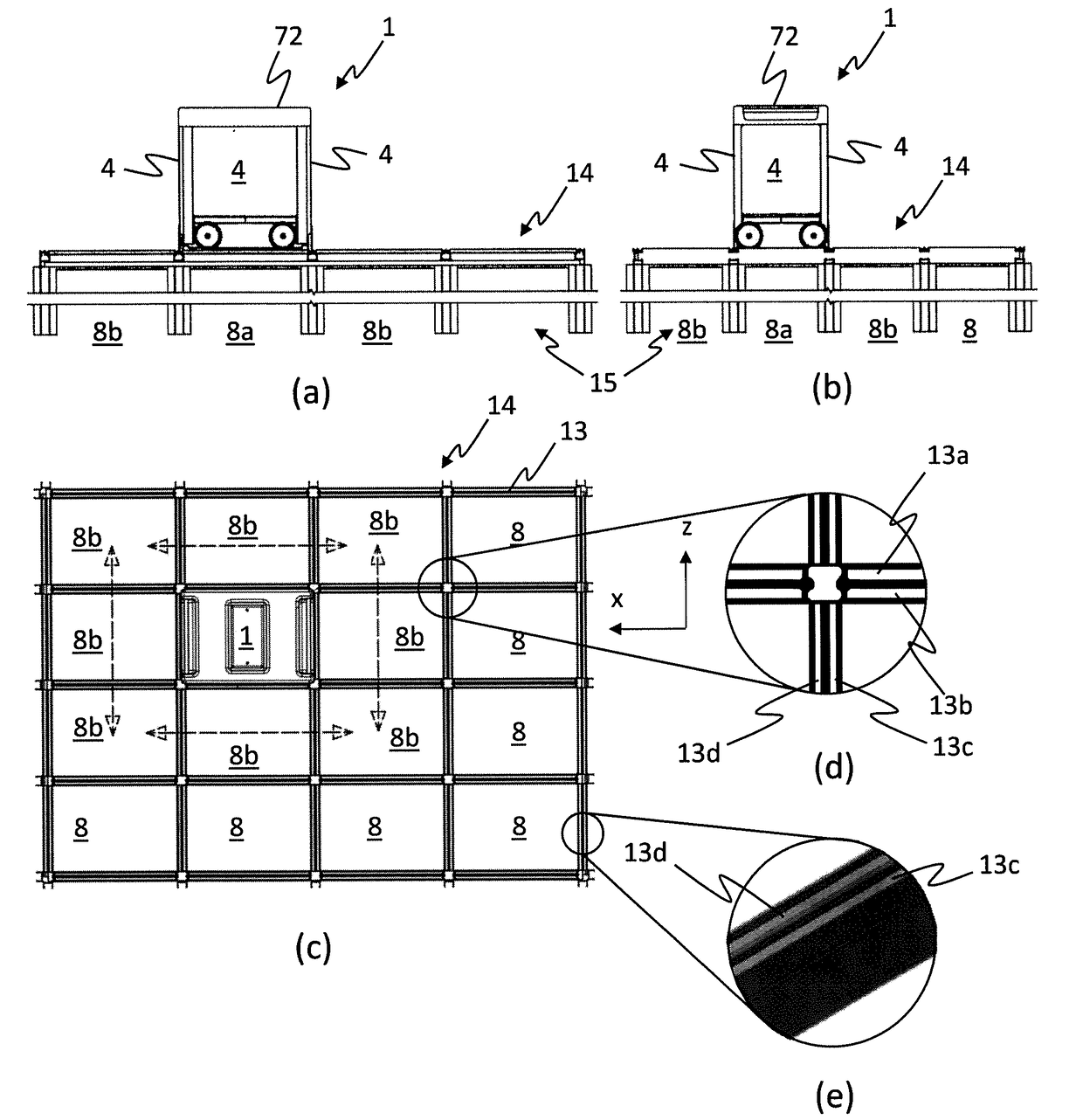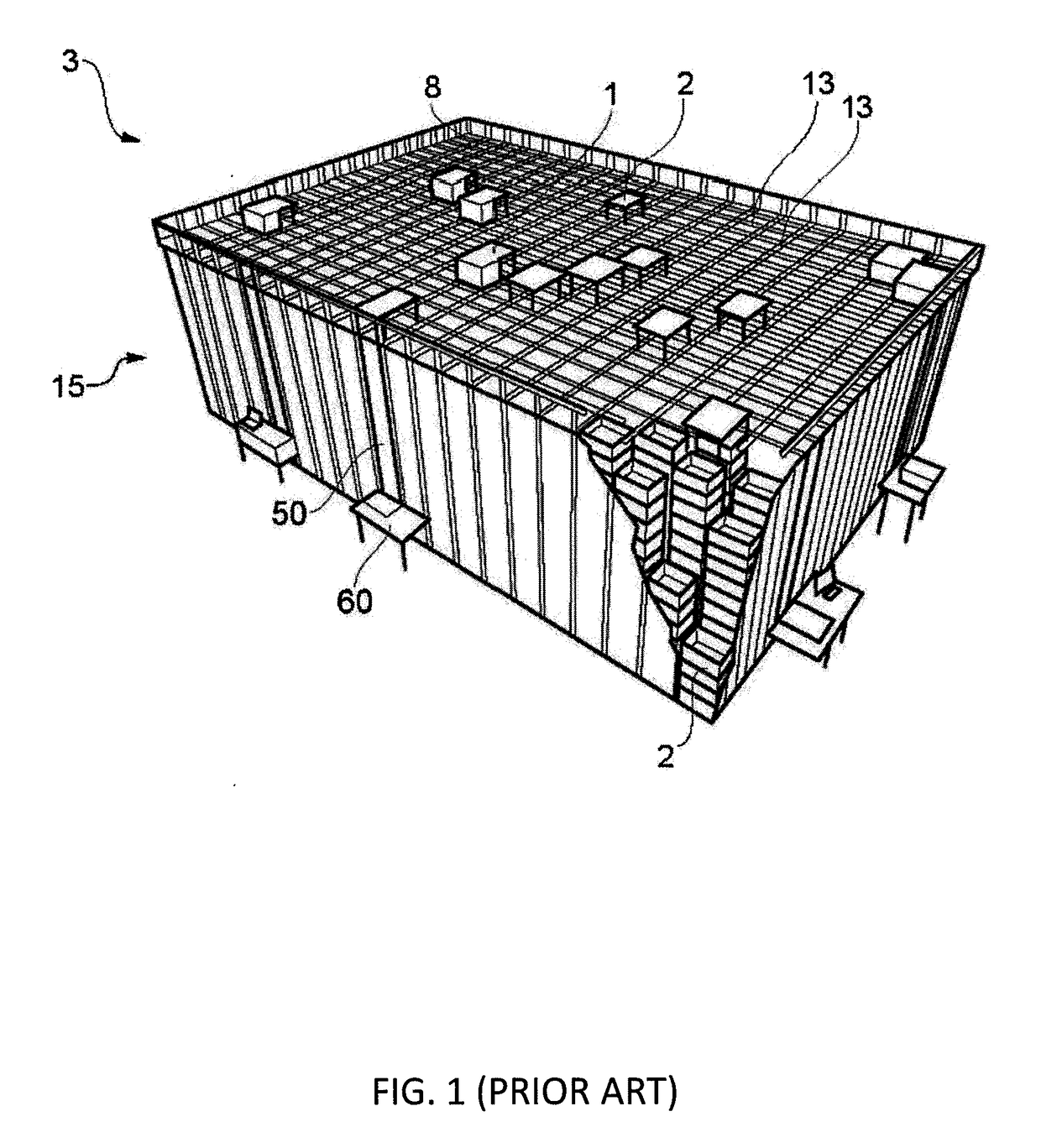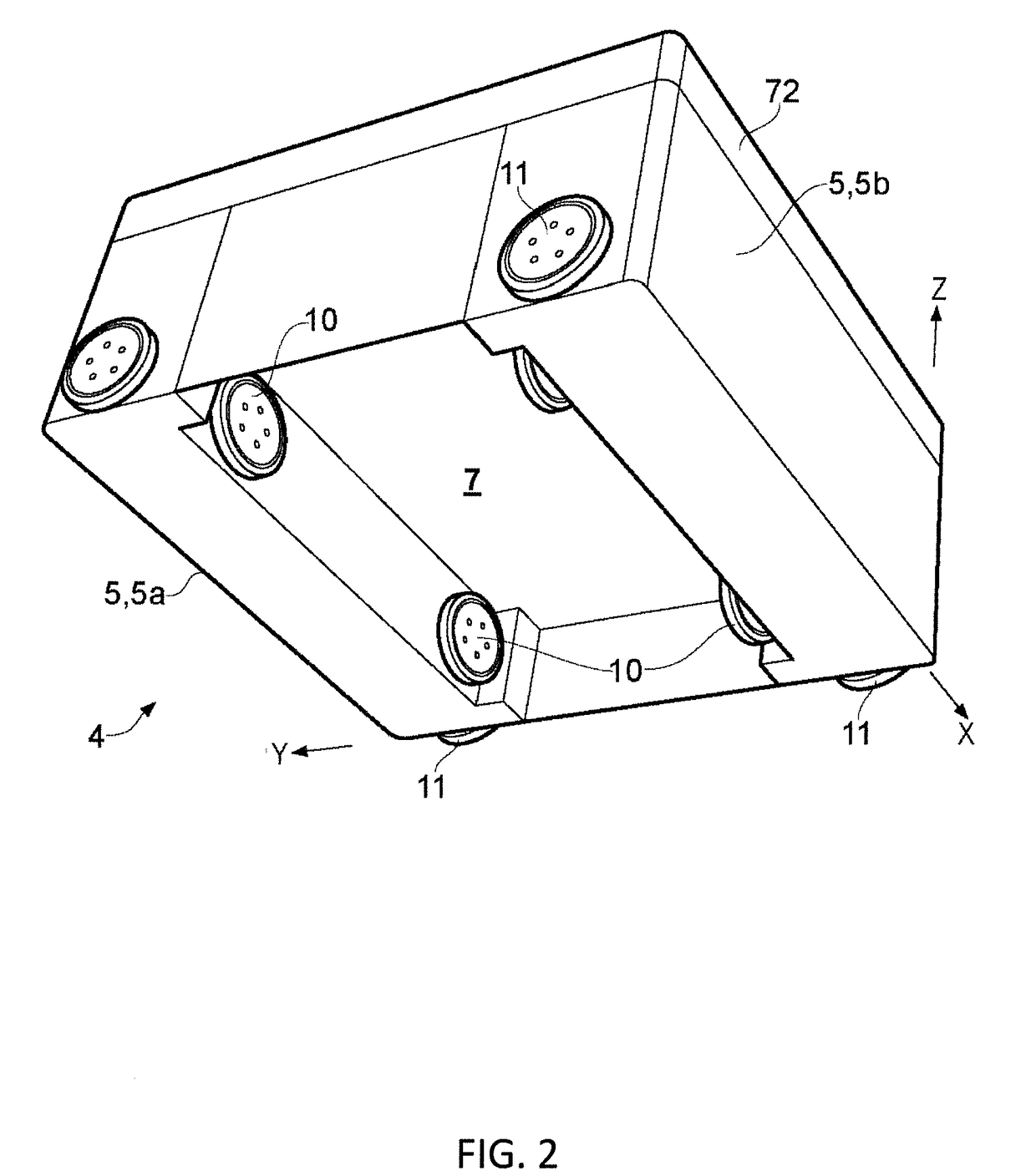Robot for transporting storage bins
a robot and storage bin technology, applied in the direction of load-engaging elements, program-controlled manipulators, trolleys, etc., can solve the problem of limiting the maximum number of simultaneously operating vehicles, and achieve the effect of stable pressure and better conta
- Summary
- Abstract
- Description
- Claims
- Application Information
AI Technical Summary
Benefits of technology
Problems solved by technology
Method used
Image
Examples
first embodiment
[0047]FIGS. 2 and 3 give perspective views in two different angles of a robot 1 in accordance with the invention comprising a rectangular vehicle body or framework 4 displaying a cavity 7 centrally arranged there within, a top cover 72 covering the top part of the body 4, a first set of four wheels 10 mounted inside the cavity 7 and a second set of four wheels 11 mounted at the exterior walls of the body 4. The first and second set of wheels 10,11 are oriented perpendicular to each other. For the sake of clarity a Cartesian coordinate system is shown with its X, Y and Z axes aligned along the principal directions of the rectangular vehicle body 4. The size of the cavity 7 is adapted to at least contain the largest storage bin 2 intended to be picked up by the robot 1, and preferably also a vehicle lifting device 9 (FIG. 4). The lateral area, i.e. along the X and Y directions, may be of any size relative to the prior art storage system, for example less than the lateral area of an un...
second embodiment
[0058]FIGS. 10-11 show other illustrations of the vehicle in accordance with the
[0059]A vehicle with a top cover 72 (non-removable or removable) and a vehicle body 4 covering all sides in the X,Y directions is shown in FIGS. 10 (a) and (b) observed along x direction and y direction respectively.
[0060]In the partly transparent illustration in FIG. 10 (c) a storage bin 2 may be seen arranged fully within the cavity 7. FIGS. 10 (b) and (d) show a cross sectional views along section A-A of FIG. 10 (a) and section B-B of FIG. 10 (c), revealing internal components of the vehicle 1. With reference to FIG. 10 (b), the second displacement plate 34b is shown extending from the upper part 4u of the vehicle body / framework 4, including the master wheel 30, and to the lower edge of the vehicle 1, including the slave wheels 31,31a,31b (FIG. 11).
[0061]The vehicle lifting device 9 includes the vehicle lifting device motor 9a, the lifting grips 9b situated below the lifting device plate for grabbing ...
third embodiment
[0065]A third embodiment according to the invention is shown in FIGS. 13-16, where FIGS. 13 (a) and (b) show the inventive vehicle 1 comprising a top cover 72 (non-removable or removable), a vehicle body / framework 4 covering all sides in the X,Y directions, a first set of vehicle rolling means 10,10a,31a,31b and a second set of vehicle rolling means 11. FIG. 13 (b) also shows part of the cavity 7 and part of the lifting device 9 with its lifting grips 9b and guiding pins 9c.
[0066]FIGS. 14 (a) and (c) show side views observed along x direction and y direction, respectively, of the third embodiment vehicle shown in FIG. 13. Cross sectional views along section A-A of FIG. 14 (a) and section B-B of FIG. 14 (c) are shown in FIGS. 14 (b) and (d), respectively, revealing internal components of the vehicle 1. As for the second embodiment shown in FIG. 10 (b) the second displacement plate 34b extends from the upper part 4u of the vehicle body 4 to the lower edge of the vehicle 1, including ...
PUM
 Login to View More
Login to View More Abstract
Description
Claims
Application Information
 Login to View More
Login to View More - R&D
- Intellectual Property
- Life Sciences
- Materials
- Tech Scout
- Unparalleled Data Quality
- Higher Quality Content
- 60% Fewer Hallucinations
Browse by: Latest US Patents, China's latest patents, Technical Efficacy Thesaurus, Application Domain, Technology Topic, Popular Technical Reports.
© 2025 PatSnap. All rights reserved.Legal|Privacy policy|Modern Slavery Act Transparency Statement|Sitemap|About US| Contact US: help@patsnap.com



